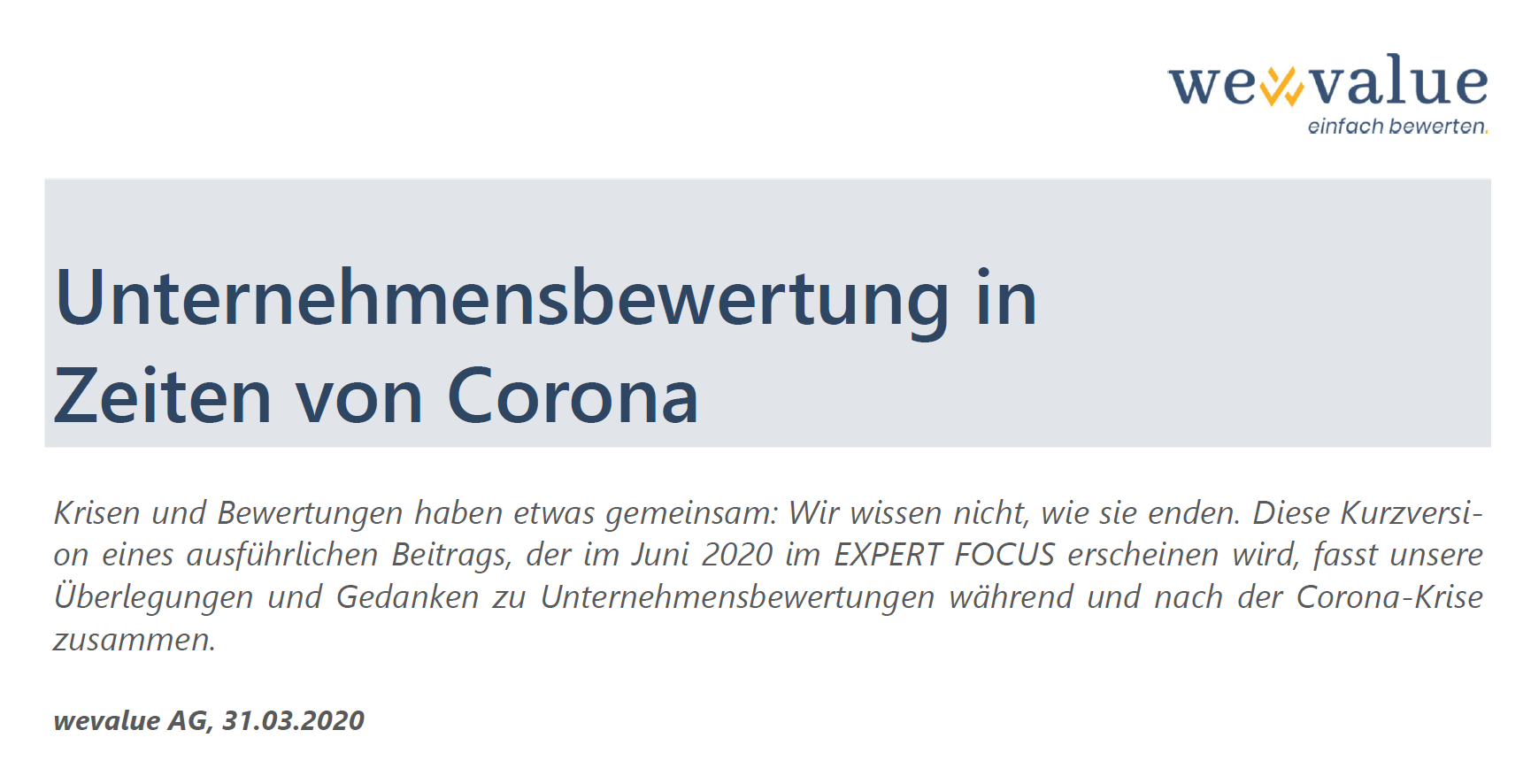Company valuation in times of Corona

Crises and valuation have something in common: we do not know how they end
This short version of a detailed article that will appear in EXPERT FOCUS in June 2020 summarises our thoughts and reflections on company valuations during and after the Corona crisis.
Need for valuations
There continues to be a great need for valuations: time-bound transactions (squeeze-out), pending proceedings (divorce, inheritance, settlements) or accounting and tax purposes (impairments). In addition, we will see distressed sales and buying opportunities that require valuation considerations.
Planning: “Rake” instead of “Hockey Stick”
The virus is a stress test for every business model and planning. Simplistic assumptions about the future are popular: “U” valley, “V” dip or “L” crash. However, most companies are likely to see a “rake”, i.e. they are currently experiencing an abrupt downturn and hope for a quick post-crisis recovery. Whether a recovery back to pre-crisis levels is possible, however, depends on the company’s condition: What about margins, reserves and liquidity? Is the pre-crisis planning still valid in terms of business model, revenues and profitability, investments, net working capital or liquidity? In addition, it may be necessary to extend the detailed planning period until a sustainable stable state can be assumed again.
Residual value, growth and probability of bankruptcy
Textbooks assume that companies have an unlimited lifespan and perpetual growth. However, the textbook does not provide for a virus, so these assumptions need to be critically examined: Alternatives to perpetuity – sale or liquidation – must be modelled in residual value. A positive growth rate for all eternity is no longer a matter of course: taking into account a probability of default – for example in the form of a negative growth rate – may be necessary.
Capital structure
All parameters based on a “peer group” are currently affected by the downturn in the capital markets. We recommend a critical review of market data or the use of reasonable estimates based on a multi-year historical period or a realistic financing policy. State aid – liquidity and/or credit programmes – is often associated with restrictions on dividend distributions and investments. The forward-looking financial model must take these circumstances into account.
Cost of capital
In our view, Corona does not fundamentally change the methodology for estimating the cost of capital. The CAPM will continue to be best practice. It joins other events such as the oil price shocks of the 1970s, 9/11 and the financial crisis of 2008/09 and will therefore – hopefully – be an isolated event and not a long-term trend. It remains to be seen whether the Corona crisis will affect the level of the risk-free interest rate or the market risk premium in the medium to long term. The de facto zero interest rate on emergency Corona loans granted by the federal government does not reflect the actual default risk of companies. Therefore, debt cost adjustments or the application of a “debt beta” should be considered.

